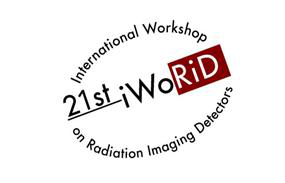Speaker
Description
The HL-LHC upgrade will impose very stringent constraints in terms of radiation resistance of solid-state detectors. In this work we address the effects of surface damage on detectors fabricated on high-resistivity p-type FZ <100> substrates by Hamamatsu Photonics (HPK) and Infineon Technologies (IFX).The devices underwent a wide set of measurements before and after X-ray irradiation with doses up to 100 Mrad(SiO2) to extract the integrated interface trap density (NIT) and the oxide charge (QOX) peculiar to different vendors, processes and technology options [1][2]. NIT and QOX can be then used as inputs to TCAD simulation tools aiming at validating the model itself. On the basis of the new experimental evidences at these high doses, the TCAD model has been updated with two main bands of defects, one acceptor and one donor, extended to the whole silicon bandgap accounting for the net effect of the radiation-induced acceptor- and donor-like defects. Updated measured cross-sections render the new modeling scheme more robust.
The comparison between simulations and measurements, e.g. in terms of C-V curves of IFX/HPK MOS capacitors, is illustrated in Fig.1 and has been used as cross-check for surface radiation damage validation purposes. With the same modeling scheme it is possible to reproduce the I-V of gated-diodes and the interstrip resistance as a function of the dose up to 100Mrad(SiO2) for the wide range of technology and design options investigated. The good agreement between simulations and measurements would support the use of the TCAD model as a predictive tool to optimize the design and the operation of the new generation of silicon detectors for the future High Energy Physics experiments in the HL-LHC scenario.
ATTACHED FIGURE
Figure 1. Simulated and measured C-V of MOS capacitors manufactured by HPK (pstop/pspray) and by IFX (6”/8’’ wafers) after X-ray irradiation doses of 0.05, 10 and 100 Mrad(SiO2).
REFERENCES
[1] F. Moscatelli et al, Surface damage characterization of FBK devices for High Luminosity LHC (HL-LHC), 2017 JINST 12 P12010.
[2] F. Moscatelli et al, Effects of Interface Donor Trap States on Isolation Properties of Detectors Operating at High-Luminosity LHC, IEEE Trans. on Nucl. Science, vol. 64, no. 8, 2017.
